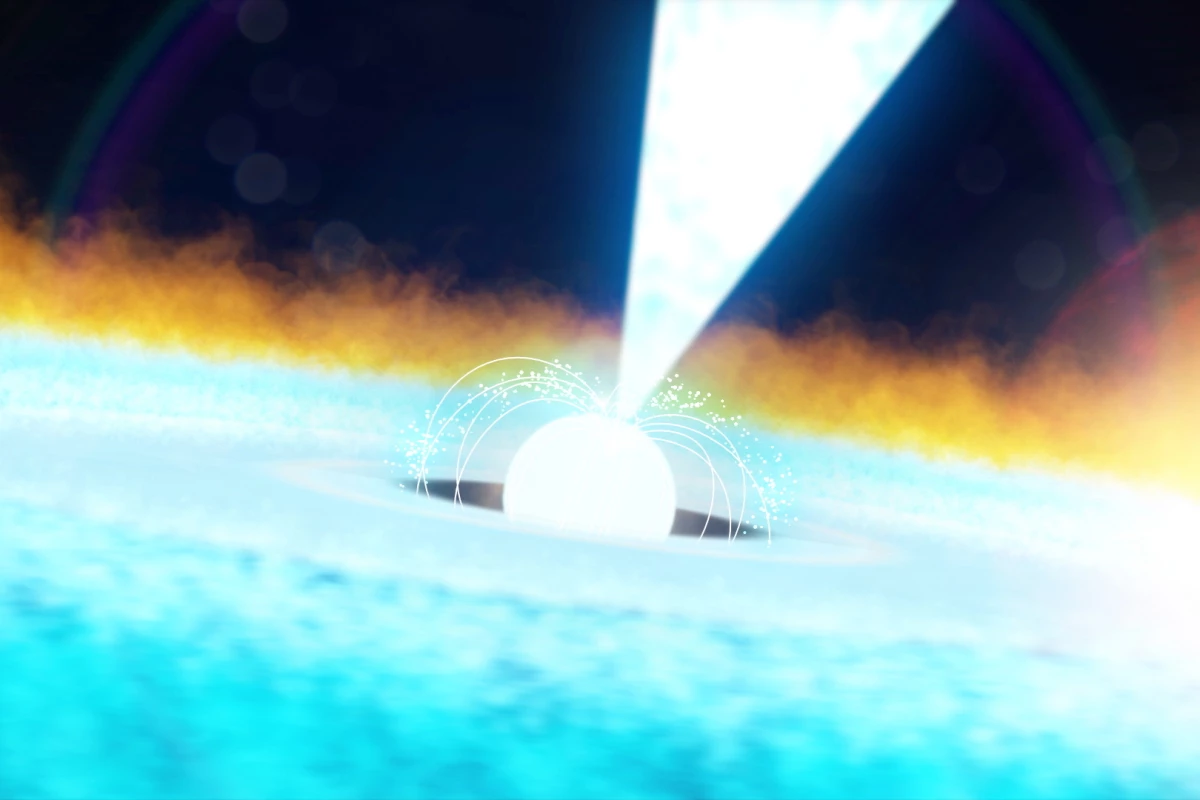On August 20, an X-ray instrument onboard the International Space Station (ISS) captured the brightest X-ray burst it has ever seen. The explosion came from a pulsar thousands of light-years away, releasing as much energy in 20 seconds as the Sun does in 10 days. Now a NASA team has outlined what they believe caused it.
A pulsar is a type of neutron star, left behind after a more massive star sheds most of its material in a dramatic supernova. The remaining core is still active, particularly at its poles where it blasts X-rays in focused beams. Because these objects spin so fast, some of their beams happen to sweep over Earth periodically, creating regular X-ray pulses that gives pulsars their name.
In this case, the burst came from a pulsar called SAX J1808.4-3658 (or just J1808). It’s about 11,000 light-years from Earth in the constellation Sagittarius, and spins 401 times per second. But the signal detected was no regular pulse – it was the brightest ever spotted by NASA’s Neutron Star Interior Composition Explorer (NICER) telescope, and showed some other strange features.
The burst started off strong, paused for about a second, before flaring up even brighter for another two seconds until it hit its peak. After holding there for a few seconds, the flare fades. On it way back down though, it briefly brightens again by about 20 percent, before gradually fading out over the next 40 seconds or so.
This particular pattern is unusual for this type of explosion, which astronomers call a Type I X-ray burst. But the researchers have put forward a scenario that they believe explains (at least most of) the event.
“This burst was outstanding,” says Peter Bult, lead researcher on the study. “We see a two-step change in brightness, which we think is caused by the ejection of separate layers from the pulsar surface, and other features that will help us decode the physics of these powerful events.”
According to the team, the weirdness of this signal can be attributed to its environment. This pulsar isn’t alone – J1808 is part of a binary system with a brown dwarf, an object too big to be a planet but too small to be a star.
The story they outline goes as follows. Because of their close proximity, J1808 is pulling hydrogen gas off the brown dwarf, into an accretion disk surrounding the pulsar. Over time, some of the gas in this disk becomes too dense and unstable, triggering a runaway process that eventually causes the explosion.
Light from the pulsar struggles to push through the denser gas cloud, trapping energy that heats and ionizes some of the gas. This gas, in turn, traps more energy in a feedback loop. Eventually the gas begins to spiral in towards the pulsar, falling onto its surface.
The hydrogen gas that falls in surrounds the pulsar like a sea, getting deeper as more falls in. The deeper parts are exposed to higher temperatures and pressures until the hydrogen nuclei begin to fuse into helium. This process, which is in operation at the core of the Sun, produces energy.
“The helium settles out and builds up a layer of its own,” says Zaven Arzoumanian, co-author of the paper. “Once the helium layer is a few meters deep, the conditions allow helium nuclei to fuse into carbon. Then the helium erupts explosively and unleashes a thermonuclear fireball across the entire pulsar surface.”
And this, the team says, is the explosion that NICER witnessed. The initial brightening was the hydrogen layer expanding, while the one-second pause was the pulsar blasting the hydrogen layer off into space.
After that, the higher peak marked when the more massive helium layer was blown off. Since this expanded faster, it would have overtaken the hydrogen layer, before slowing, stopping, and settling back down to the pulsar’s surface. This would have created the fading effect.
But one mystery remains: the team still isn’t sure what caused the signal to briefly brighten again as it faded.
The level of detail that NICER was able to capture could help unlock some of the secrets of pulsars.
The research was published in the Astrophysical Journal Letters. The video below illustrates the process by which the flare occurred.
Source: NASA




